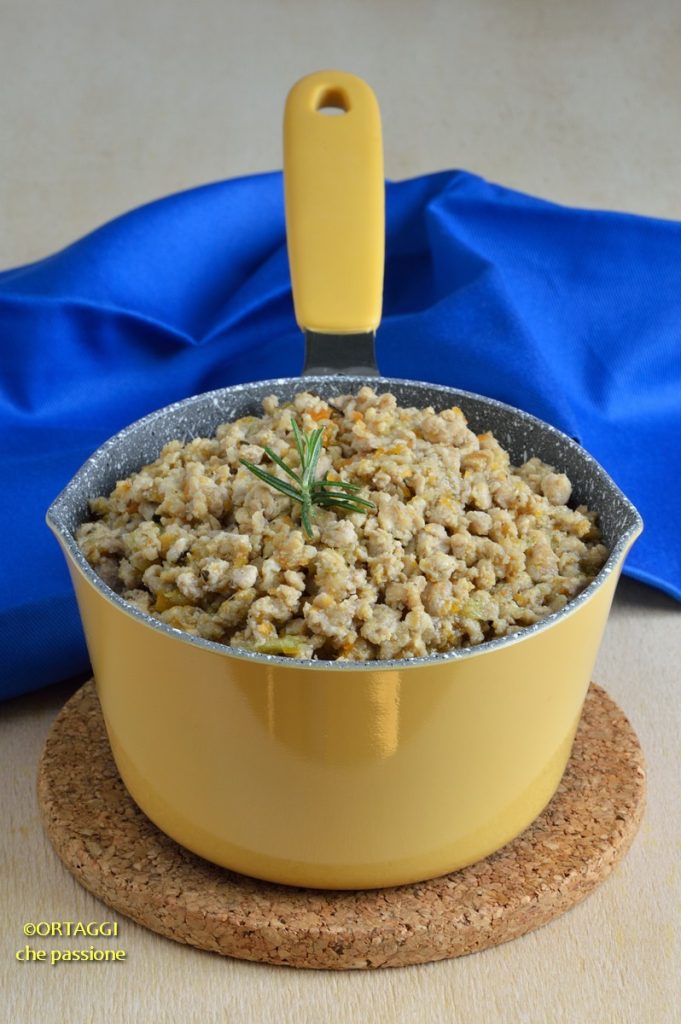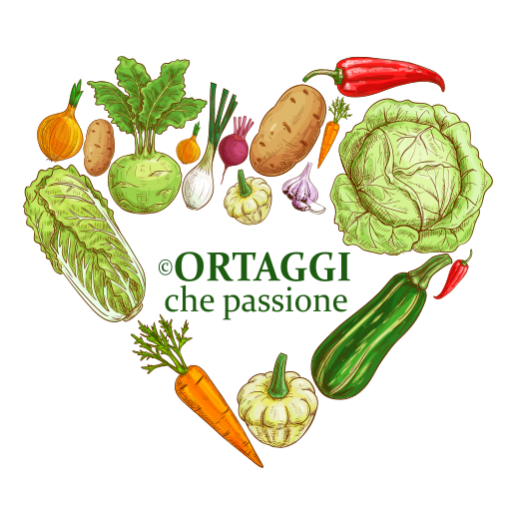Today I share with you a recipe for a creamy white ragù, a fragrant sauce I often prepare for pasta. Everyone has their own version: some prefer the Tuscan, some the Genoese, some the Neapolitan. I prepare it as taught by my grandmother Benedetta, in large quantities to freeze some and have it ready whenever needed or in a hurry.
SEASON of tomato-free ragù: good in cold and also in summer season.
TRADITIONAL or vegetarian ragù RECIPES

- Difficulty: Easy
- Cost: Medium
- Preparation time: 5 Minutes
- Portions: 10
- Cooking methods: Stovetop
- Cuisine: Italian
- Seasonality: All Seasons
- Energy 236.61 (Kcal)
- Carbohydrates 6.23 (g) of which sugars 1.90 (g)
- Proteins 9.06 (g)
- Fat 18.96 (g) of which saturated 6.46 (g)of which unsaturated 11.56 (g)
- Fibers 0.87 (g)
- Sodium 870.45 (mg)
Indicative values for a portion of 100 g processed in an automated way starting from the nutritional information available on the CREA* and FoodData Central** databases. It is not food and / or nutritional advice.
* CREATES Food and Nutrition Research Center: https://www.crea.gov.it/alimenti-e-nutrizione https://www.alimentinutrizione.it ** U.S. Department of Agriculture, Agricultural Research Service. FoodData Central, 2019. https://fdc.nal.usda.gov
White Ragù
- 1.65 lbs mixed ground meat (lamb, duck, rabbit, guinea fowl, pork, chicken, turkey…)
- to taste peanut oil (or extra virgin olive oil)
- 2 Onions
- 1 carrot
- 1 stalk celery
- 1 clove garlic
- Half glass white wine (optional)
- to taste coarse salt
- 0.42 cups whole milk (or cream)
- 1 clove
- 1 teaspoon basil (dried and crushed fresh)
- Half teaspoon marjoram (dried or fresh)
- 2 pinches nutmeg (freshly grated)
- Half tablespoon rosemary
- Half teaspoon paprika
- Half teaspoon chili pepper (fresh or powdered)
- Half teaspoon savory (dried or fresh)
- 1 pinch coriander seeds (freshly ground)
- Half tablespoon thyme (or oregano)
Tools
- Cutting board
- Knife sharp smooth blade
- Pan wide and thick-bottomed
- Ladle
White Ragù
Prepare the vegetables
Clean and wash: the onions, carrot, celery, and garlic clove. Chop everything in a blender or cut all the vegetables into small uniform pieces with a knife.
Cooking
In a wide and thick-bottomed pan, pour: the oil (and/or water), the vegetables and let them soften and brown, it will take about 10 minutes.
Once the vegetables are nicely dry, add the ground meat and let it brown over high heat, continuing to stir with a ladle and breaking up the meat into smaller pieces.
To achieve a more intense flavor: separately fry the ground meat in a wide non-stick pan with very little oil. Once browned (and thus achieving the Maillard reaction), it can be added to the pot with the vegetables.
Pour in half a glass of white wine and let it evaporate. Then add the preferred herbs and salt. Continue cooking for 20-30 minutes, adding hot water as needed (for a creamier result add whole milk or cream).
ALTERNATIVES and VARIATIONS
For a more flavorful result, sauté the vegetables with 20-30g of butter. Then brown diced pancetta and/or crumbled sausage, and lastly the ground meat.
For a creamier result, cook the white ragù longer or until all the meat breaks down.
Light version: for the sauté, use water instead of oil. Prefer to add a drizzle of extra virgin olive oil raw to the white ragù along with the cooked tagliatelle.
How to STORE the white ragù?
– in the refrigerator for up to 4 days
– in the freezer for 3 months
How do you know when the ragù is ready?
The ragù is ready when it thickens and oily streaks appear around the edges of the pot, indicating the accumulation of the meat’s fat. Make sure the consistency is creamy and that the ingredients are perfectly blended. You can also taste it to ensure it’s well seasoned and adjust the flavor if necessary.
What type of pasta pairs well with ragù?
Pasta that goes well with ragù is long and robust, like tagliatelle, pappardelle, or spaghetti.

